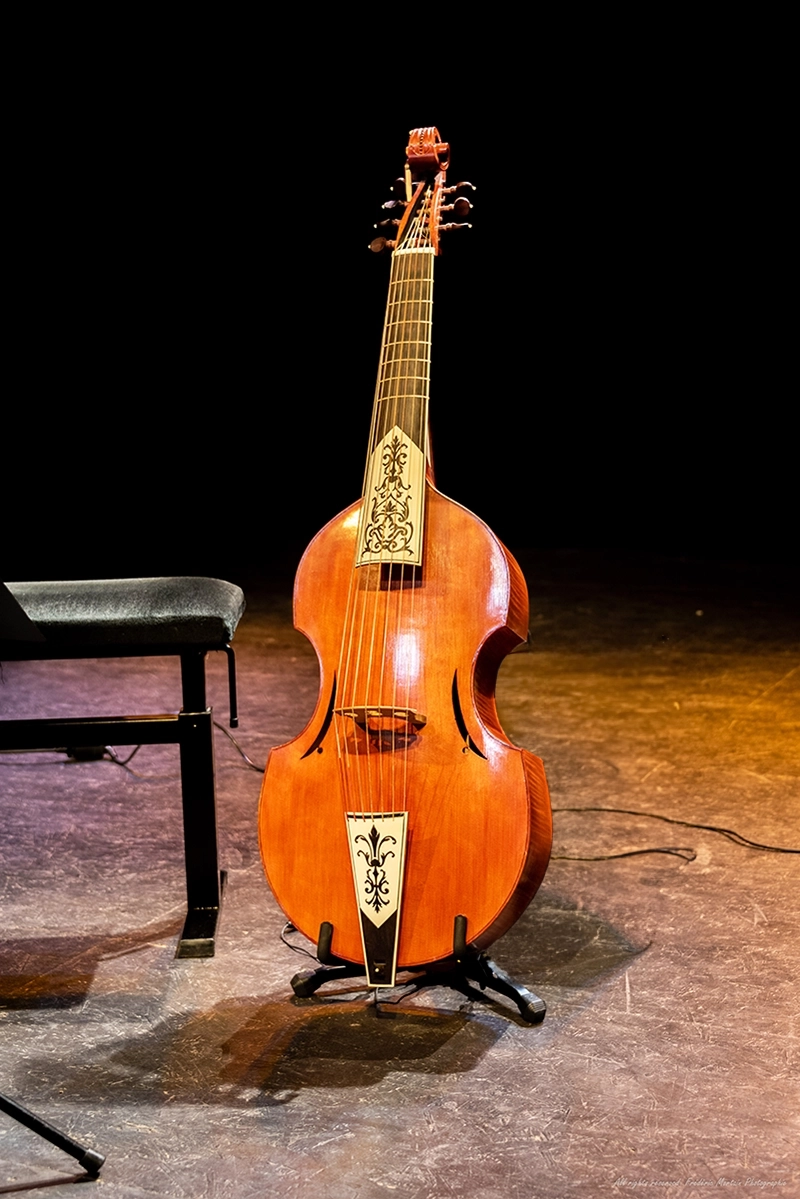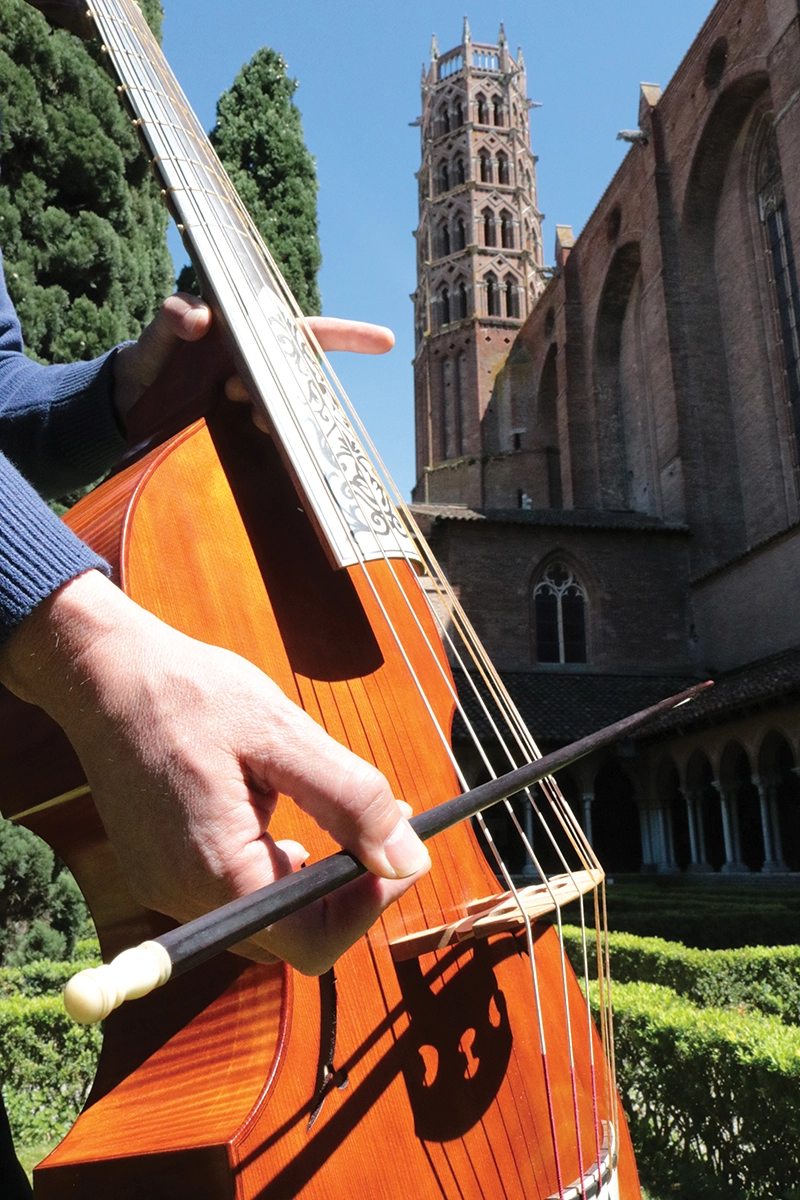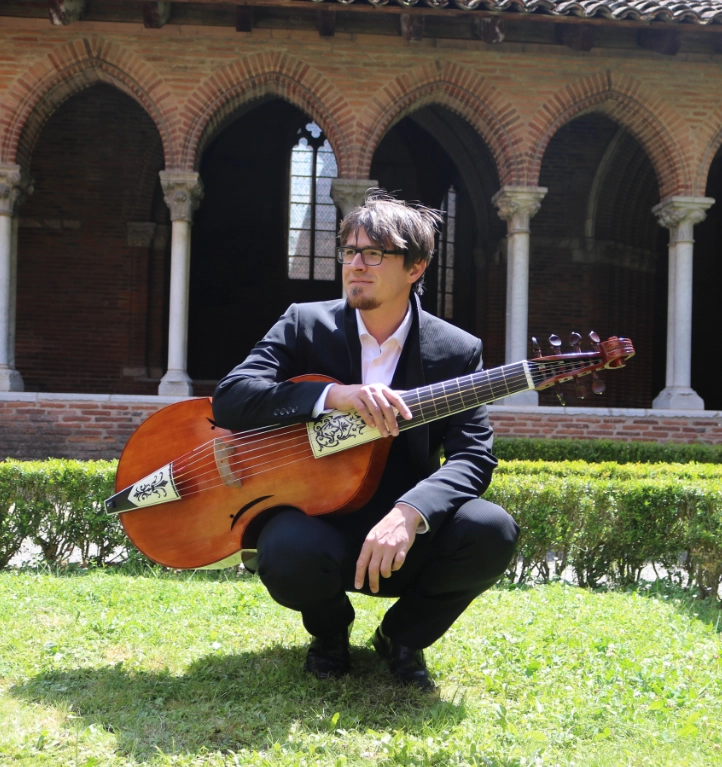Viola da gamba
The viola da gamba, also known as the “viol”, is an instrument that enjoyed great popularity during the Renaissance and early Baroque periods. Like its famous cousin, the violin, the viola da gamba is a bowed stringed instrument that appeared almost simultaneously in history, having the bowed fiddle as its common ancestor.

The viola da gamba throughout history
The earliest evidence of the existence of violas da gamba are paintings discovered in the ceilings of Valencia Cathedral and a church in Xativa, Spain, dating from around 1475.
For almost three hundred years, from 1475 to around 1780, violas da gamba marked the history of Western music as flagship instruments, performing at royal courts and travelling throughout Europe.
etymology and characteristics of the viola da gamba
The term “viola da gamba” comes from the Italian “viola da gamba”, literally meaning “leg violin”, as these instruments were traditionally placed on the musician’s legs. The name “viola da gamba” was chosen to distinguish them from violins, which were formerly known as “viola da bracchio”, or “arm violin”.
Arm violins consisted of four instruments: the violin, viola, cello and double bass. The violas da gamba consisted of 7 instruments, from the highest to the lowest pitch: the pardessus de viole, the dessus de viole, the alto de viole, the tenor de viole, the basse de viole, and two contrabasses de viole, also known as violones, tuned in D or G depending on their size.
Stringing and tuning the viol
The viola da gamba is a fretted instrument, similar to the guitar in that the notes are delimited by frets. On the guitar, the frets are usually fixed and made of metal, whereas on the viola da gamba, they are made of gut strings and are slightly movable to vary the temperament.
The main tuning of the viols is similar to that of the guitar, with fourths and a major third in the middle. The notes of the open strings are MI LA D G B MI for the guitar and A D G DOL MI LA D for the bass viol. So, without being an arpeggione (guitar played with a bow), the finger positions between viols and guitar are fairly close. For example, a C major chord on a guitar is an F major chord on a bass viol. Any guitarist can therefore quickly adapt to the neck of a viola da gamba.
The strings used on viols are usually gut strings for the upper strings and spun gut strings for the basses, i.e. gut surrounded by metal. The gut used is usually sheep or ox gut. The metal used to spin the gut is usually brass, silver or copper.
The bows used to play the viola da gamba have differed greatly from one period to another, and the bow-holding technique seems to have been inspired by techniques used on even older instruments.


A rich repertoire of renowned composers
The musical repertoire for the viola da gamba is vast, stretching from the end of the Middle Ages to the end of the Baroque period, around 1780, and covering the whole of Europe.
The great composers who have written for the viola da gamba include Johann Sebastian Bach, Marin Marais, Monsieur de Sainte Colombe, Louis de Caix D’Hervelois, Jacque Morel, De Machy, Henri Purcell, John Dowland and Antoine Forqueray, Antonio Vivaldi, Arcangelo Corelli, Marc-Antoine Charpentier, Diego Hortiz, Carl Friedrich Abel, Goerges Philippe Telemann, Georg Friedrich Handel, Johann Schenck, Tobias Humes, William Byrd, Thomas Morley, Christopher Simpson, among others.
Famous contemporary performers include Jordi Savall, Pablo Pandolfo, Marianne Muller, Wieland Kuijken, Christophe Coin, José Vasquez, Jonathan Dunford, Hille Perl, Jérôme Hantaï, Philippe Pierlot, Sophie Watillon, Robert Smith, Lucile Boulanger, Ronald Martin Alonso, François Joubert-Caillet, Florence Bolton, Atushi Sakaï, Myriam Rignol, Flore Seube, Salomé Gasselin, Robin Pharo and Valentin Tournet.
The composer Johann Sebastian Bach used the viola da gamba extensively, both for the high parts (par dessus de viole, dessus de viole) and the low parts (basses de viole, violone). So, for an interpretation closer to historical reality, it would be important to play Bach on these instruments.
The rebirth of the viola da gamba
Pascal Quignard’s book Tous les matins du monde, adapted into a film by Alain Corneau in 1991, did much to revive interest in and practice of this forgotten instrument. Since then, contemporary works have been composed by musicians such as Roland Kern, contributing to its revival.
